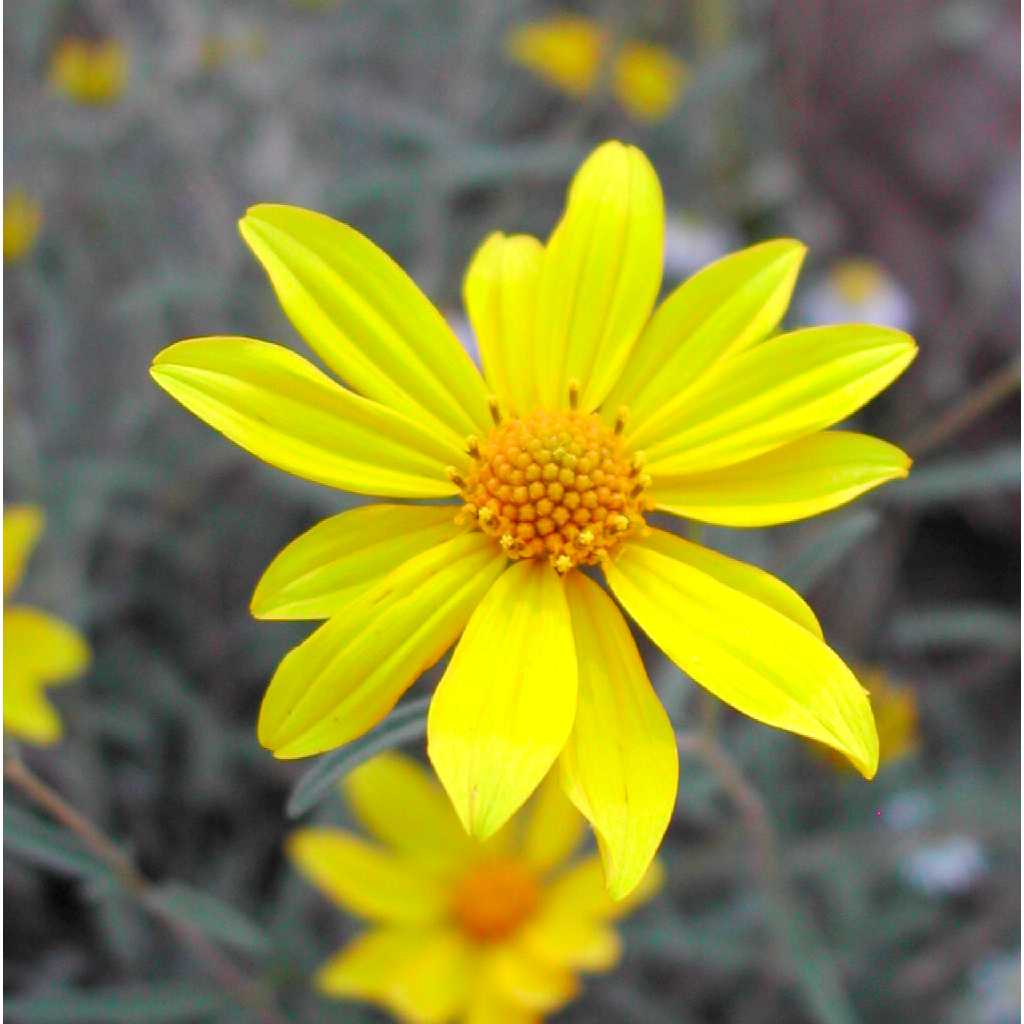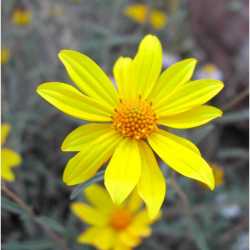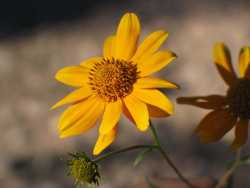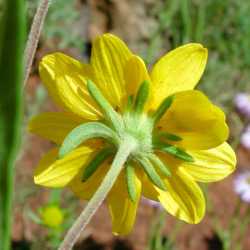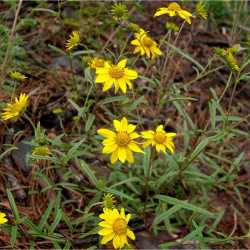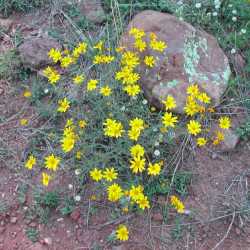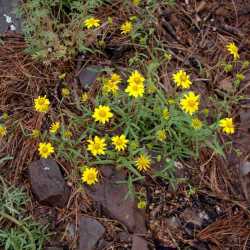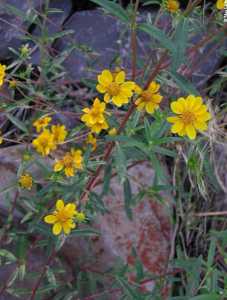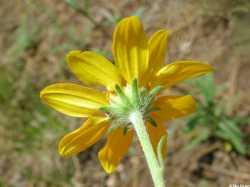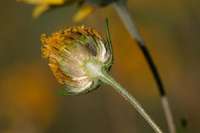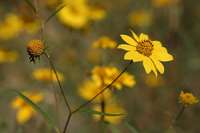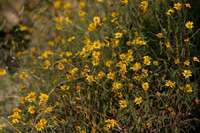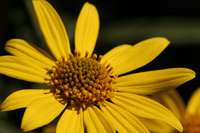Perennials, 20-120+ cm (caudices woody). Stems strigose or puberulent to glabrate. Leaves opposite or alternate; blades elliptic, lance-linear, lance-ovate, linear, or ovate, 10-90 × 2-28 mm, margins ciliate to 1/4 their lengths, hairs mostly less than 0.5 mm, faces strigose, abaxial often gland-dotted. Heads 6-30+. Peduncles 1-15 cm, lengths 1/20-1/2 leafy portions of stems. Involucres 6-14 mm diam. Phyllaries 4-8 mm. Paleae oblong, 5-6 mm, cuspidate. Ray florets 5-14; laminae oval to oblong, 7-20 mm (gland-dotted along veins and abaxially). Disc florets 50+; corollas 3-4 mm. Cypselae black or gray-striate, 1.2-3 mm.
Heliomeris multiflora most frequently occurs in montane habitats. It produces a branched, woody caudex with adventitious buds, even in the first growing season. From the aerial parts of the plant there is little to distinguish it from H. longifolia, although it tends to have longer peduncles and broader leaves.
Varieties 3 (3 in the flora): sw United States, Mexico.
Duration: Perennial
Nativity: Native
Lifeform: Subshrub
General: Perennial herbs to subshrubs, 20- 100 cm tall from a woody caudex; stems branching distally, glabrate (nearly hairless).
Leaves: Lower leaves opposite along the stems, the upper leaves often alternate; leaf bases tapering into short perioles; blades linear to elliptic with entire to denticulate margins, these obscurely ciliate on the proximal 1/4; upper and lower surfaces covered with stiff hairs, the lower surfaces often stipitate glandular as well.
Flowers: Flower heads showy radiate, and yellow, solitary or numerous in loose panicles; involucres hemispheric to rotate, 6-10 mm high, the bracts (phyllaries) in 2-3 series, linear-lanceolate and strigose with white hairs; rays 5-14 per flower head, yellow, the laminae (ray petals) 7-17 mm long; disk flowers 50 or more per flower head, yellow.
Fruits: Achenes black or gray-striate, 1-3 mm long; without any pappus.
Ecology: Found on dry slopes, in mountain meadows, and in pine forests, from 4,500-9,000 ft (1372-2734 m); flowers May-October.
Distribution: Most of western US, from OR and CA east to MT, WY, CO and s TX; south to c MEX.
Notes: Look for this species under Viguiera multiflora in older texts. It is a common understory plant in montaine forests; distinguishing characteristics are that it is a perennial herb with a slightly woody base; has narrow stems that are often reddish in color; opposite leaves that are narrowly lance-shaped or oblong; and showy yellow sunflower-like flower heads at branch tips, with visibly hairy phyllaries. Two varieties are recognized in the Southwest: var. multiflora is usually found above 8,500 ft elevation and has wider leaves, 8-20 mm wide, with flat margins; var. nevadensis is generally found below 8,500 ft and has narrow leaves, 2-8 mm wide, with revolute (curled) margins. It may be confused with the similar-appearing H. longifolia, but that species is an annual with a taproot.
Ethnobotany: The seeds are edible by humans, livestock and wildlife; and the plant was used ceremonially against witchcraft.
Etymology: Heliomeris is from the Greek helios, sun, and meros, division or part, likely referring to its sunflower-like attributes; multiflora means many-flowered.
Synonyms: Viguiera multiflora, Gymnolomia multiflora
Editor: LCrumbacher 2011, FSCoburn 2015, AHazelton 2017


